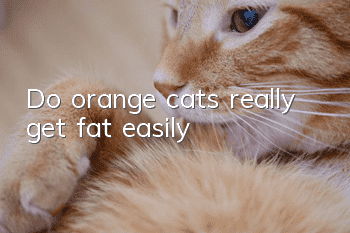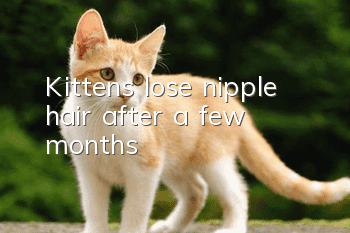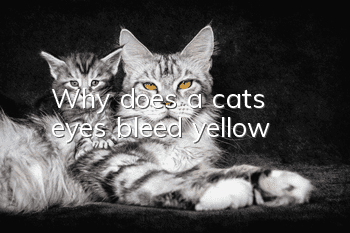Basic home physical examination for cats

Parents who have raised cats all know that cats are habitual animals with fixed preferences and fixed routes. Originally, I thought we could understand its discomfort from its changes. But after getting along with him later, I discovered that it is a very tolerant animal, trying its best to hide all the discomforts in the body. By the time the symptoms become obvious, it is already too late...
If we can detect its subtle changes and check it regularly, we can detect the precursors of disease from its changes in diet, hair, and even calls, and prevent it in advance.
Basic home physical examination
1. Ears
Healthy cats have erect ears (except for folded ears). Use a cotton swab to wipe the external auditory canal clean (yellowish attachments). It may be due to excessive fat secretion that the ear canal is sticky. Clean it as soon as possible to avoid bacterial growth.
·Cause symptoms
Ear mites: There are brown/red attachments in the external auditory canal, accompanied by a slight odor. It is a common disease in cats and is easy to treat.
Ear scabies: constant scratching of ears and shaking of head. The earlier it is detected, the greater the chance of cure.
Otitis externa: accompanied by a foul odor, is the result of long-term suppuration and inflammation, and can also cause malignant cancers such as earwax and adenocarcinoma.
Ear hematoma: The ear is red and swollen, and it hurts when you move it. It is caused by bleeding between the skin and cartilage of the ear.
Cleft ear: Skin cancer is caused by excessive sun exposure. It needs to be removed as soon as possible after discovery to prevent its spread.
· Prevention/Treatment
For daily cleaning, you can use cotton swabs mixed with warm water + white vinegar; if ear mites appear, use special ear cleaning solution and ointment 1-2 times a day, and wipe them continuously for 20 days, and they will basically recover. (Portal: Ear mites haven’t been cured yet because you didn’t read this article)
2. Eyes
Healthy cats have bright eyes, symmetrical pupils and healthy pink inner eyelids. There will be normal secretion from the eyes, the amount is not large, the cat will clean it up by itself, and there will be no eye droppings. If a cat's eyes appear abnormal, it may be a symptom of a systemic disease.
·Cause symptoms
Keratitis: Inflammation of the cornea, making the eyes look cloudy and watery.
Cataract: Opaque eyes, common in elderly cats or diabetic cats.
Glaucoma: Due to increased pressure in the eyeball, the cornea becomes cloudy and the eyeball becomes enlarged.
Eye swelling: caused by accident/trauma/eye tumor.
Retina: Degeneration of the light-sensitive cells in the back of the eye, resulting in intermittent or total loss of strength.
The nictitating membrane cannot be closed: The nictitating membrane is usually hidden in the corner of the eye and is opened only when necessary to protect the eyes from dust and dirt. If it cannot be closed, it may be caused by conjunctivitis/internal disease/physical weakness/external stimulation.
Note: Cats that often shed tears may have viral rhinotracheitis and may also have symptoms such as runny nose and sneezing. If there is a large amount of mucus in the eyes, you can use a purple light/money detector pen to illuminate it. If it turns green, it means feline herpes virus infection.
3. Nose
Healthy cats keep their noses moist except when they are sleeping.
·Cause symptoms
Mild rhinitis: sneezing and runny nose.
Allergic rhinitis: continuous sneezing without other complications, and normal appetite. (Nasal catarrh, laryngitis, viral rhinotracheitis, and bronchitis can also cause constant sneezing)
Pneumonia/emphysema: constant sneezing and coughing.
Inflammation in the nose: snoring and nosebleeds. (Old cats may have tumors)
Note: Long-haired cats have short noses. Once they catch a cold, their noses will become sticky with mucus, which is difficult to clean and may cause difficulty in breathing. Treatment should be thorough to avoid leaving the root cause of nasal abscess or chronic rhinitis.
· Prevention/Treatment
Don’t let your cat’s nostrils become blocked, and pay attention to cleaning the dust in your home and ventilating it regularly.
4. Oral cavity
A healthy cat has no bad breath and has pink gums and tongue.
·Cause symptoms
Gingivitis: Gum inflammation is mainly seen in older cats. It may start as a dark red line close to the tooth. If left untreated, your gums may become sore and ulcers may develop.
Periodontitis: If gingivitis invades the alveolus, the teeth may become loose and abscesses may form.
Stomatitis: Inflammation of the lining of the mouth may be caused by foreign bodies in the mouth, viral diseases or dental problems. The cat has difficulty eating and the inside of its mouth will appear red.
Rodent ulcer: slowly enlarging pain or swelling of the upper lip.
Salivary cyst: A cyst may form under the tongue if the salivary glands or ducts that carry saliva into the mouth are blocked.
Mouth ulcers: Ulcers on your cat's tongue and gums are sometimes caused by respiratory or kidney disease in cats.
· Prevention/Treatment
Massaging your gums, brushing your teeth with a soft toothbrush, chewing teething toys, and eating whole grains can prevent oral diseases and keep your teeth healthy.
5. Hair
Healthy cats groom themselves whenever they have free time, so their coat quality is better and they generally do not shed except during the shedding season.
·Cause symptoms
Malnutrition: Cats eat poor quality food that cannot be digested, resulting in a lack of important minerals and vitamins.
Weight: When cats become obese, they are unable to clean their entire body, resulting in dull, matted coats.
Age: Older cats are less flexible (or have arthritis) due to age. Pain may prevent your cat from grooming.
Frequent bathing: In order to control dander or fleas, some parents will bathe their cats too much.
Disease/Climate: Diabetes, parasites, hyperthyroidism, skin infections, allergies, winter dryness, etc. may cause dry skin and dull hair.
· Prevention/Treatment
Reduce the frequency of bathing (about once every 1-2 months); supplement nutrients such as protein, fish oil, fatty acids (salmon or other) and vitamin B.
6. Breathing
A healthy cat's normal breathing is very light (about 20-30 times per minute), and it will become more rapid after exercise. In order to adjust breathing or regulate body temperature, cats will breathe "ha, ha" or "ha, ha". Especially when the temperature is high, cats will stick out their tongues and exhale "ha, ha". This is just a normal change, don't worry.
·Cause symptoms
Lung disease (pneumonia/emphysema, etc.): The cat opens its mouth "ha, ha" and breathes shallowly, quickly and painfully.
Compression of the trachea: Breathing slowly and deeply will feel uncomfortable when inhaling.
Note: There are many diseases that can cause dyspnea, such as colds, thymic lymphoma, empyema, pneumonia, vomer bone fractures, etc. However, it should be noted that even if a cat has respiratory disease, it will not show symptoms until it is terminally ill. Therefore, owners should pay special attention to observing the cat's respiratory condition.
7. Excretion (feces/urine)
Urine: healthyIn cats, the urine is dark yellow, and the amount of urine varies depending on the amount of water the cat drinks.
Feces: A healthy cat’s feces will be moderately hard and dark brown.
·Cause symptoms
Urethral stones/uria: The cat frequently goes to the toilet but cannot urinate. If you touch your belly with your hands, you will feel it is bloated.
Chronic renal failure/cystitis/urethritis: not drinking much water, frequent urination, and light-colored urine.
Colitis/Colorectal hemorrhage: The stool is bright red (or mixed with a little blood).
Small intestinal disease: feces is burnt black.
Constipation: Only defecation occurs once in more than three days. If you touch the cat's belly and there are hard lumps, it may be fecal siltation. (Cats are prone to constipation, and once every two days is normal)
Diarrhea: There is a lot of water in the feces, mixed with blood, and accompanied by a foul odor. (There are many diseases that can cause diarrhea, so if you find it, go to the hospital promptly and inform the doctor of any complications)
· Prevention/Treatment
She has diarrhea but no blood streaks or foreign matter in her stool, no fever, and she is in good spirits. You can starve it temporarily for a night and see how it goes. If subsequent diarrhea lasts for 1-3 times and then stops, there is no need to worry.
Note: Blood in the urine or abnormal yellow urine color (close to orange-red) is also evidence of a decline in the cat's physical fitness.
Parents can: touch, apply slight force, and caress the cat's body. If the cat is obviously uncomfortable or finds a lump, please seek medical attention in time; stretch the skin on the back of the neck. If it does not spring back in time, it indicates that the cat is seriously dehydrated (or touch the gums, Dry or not); weight, weigh it regularly, if it rises or falls rapidly, it means there is a physical problem (if the ribs cannot be touched during petting, it means the cat is overweight), these methods can be used to understand the physical condition of the cat.
Note: If the above symptoms (similar) appear in various parts of the cat's body, it is recommended to contact the nearest hospital for treatment in time.
If you encounter a cat vomiting hair balls, parents don’t need to worry too much, it’s a normal phenomenon. The barbs on a cat's tongue can help it comb its hair, and the combed hair enters the stomach. Over time, it will form hair balls in the intestines and stomach. Especially long-haired cats will vomit hair balls every 1-2 months. (Portal: About the reasons why cats vomit hairballs and vomit)
Some special breeds of cats may need more physical examinations than other breeds. For example, cats with folded ears should have their bones checked regularly (once a year) from an early age. Cats with a genetic risk of heart disease should undergo cardiac color ultrasound more frequently. There should be more.
- 4 tips to teach you how to train a Siamese cat and make a well-behaved cat!
- Is it normal for kittens to poop black?
- What should I do if my pet cat loses hair?
- Burmese cat food taboos
- Attention! Cat grass and catnip are not the same thing~
- How long does it take for a cat to take off its collar after applying ringworm medicine?
- Cat makes a sound like sneezing
- Tips for caring for your cat’s hair
- What is feline peritonitis
- Why do cats like to stay in pens?



